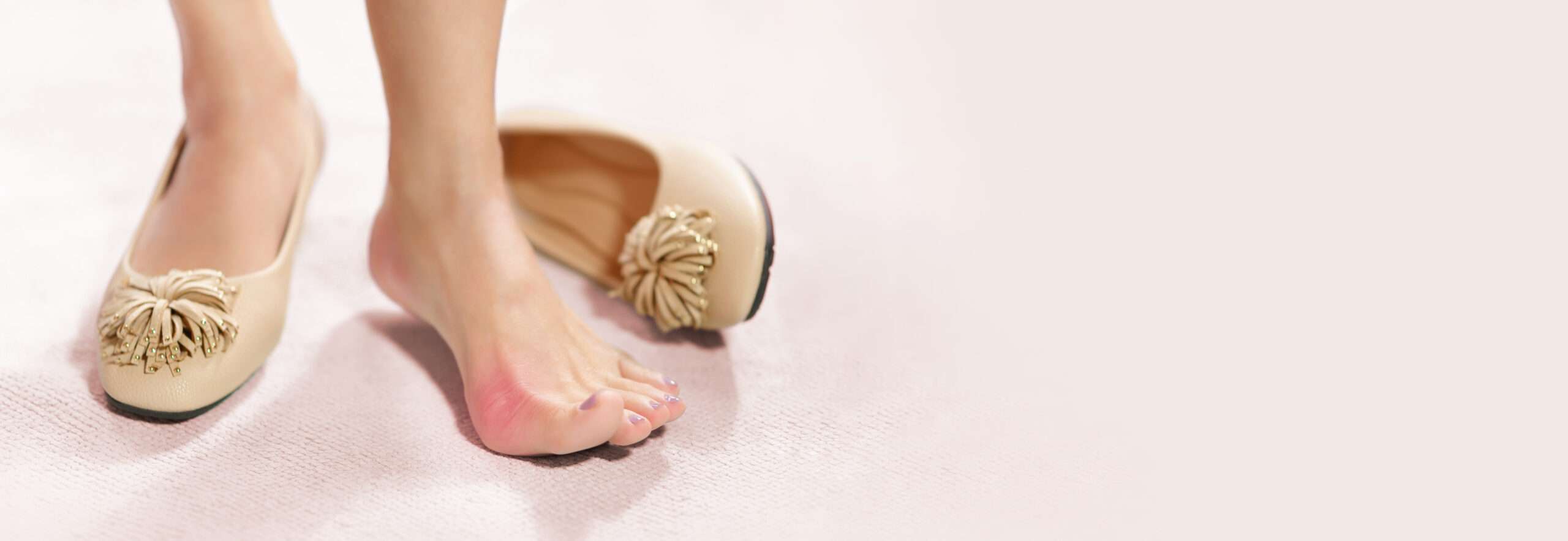Do you notice a growth on your big toe that is deviating from its normal axis and causing you difficulty when putting on shoes?
There is a good chance that a bunion is developing in your foot.
Unfortunately, once hallux valgus has firmly attached itself to your foot, surgery is the only way to remove the deformity.
However, there is nothing to stop you from looking for symptom relief.
Read on to learn 4 solutions to get rid of the discomfort caused by a bunion.
1. Wear shoes better adapted to your feet.
The development of a bunion is favored by certain genetic factors. However, a bunion can also occur as a reaction to a foot’s mechanical stress.
We recommend you to wear shoes that meet the following criteria if you are one of the people at risk of developing such a problem:
- Shoes with wide ends that leave enough room for the toes and possibly protective padding.
- Shoes that are slightly elevated and provide adequate heel support.
- Shoes that are closed and provide good support for the sole of the foot
Someone with flat or cavus feet might also benefit from orthopedic shoes or foot orthoses.
2. Avoid shoes with high heels
While it is not a direct cause of bunion, the act of wearing high-heeled shoes can make the situation much worse.
Since they are not suitable for all foot types, they can force you to adopt unnatural postures and compress your toes, causing them to deform.
Furthermore, they regularly lead to additional discomfort such as:
- Sprained ankles
- Balance problems
- Painful muscle compensation
- Stiffening of the arch of the foot
- Recurring ingrown toenails
- Excessive pronation of the foot
3. Use padded protectors available at pharmacies
If the bunion has been around for a while, its deformity can increase with time. As a result, it will rub against the inside of the shoe and cause discomfort or even pain.
While a bunion’s deformity of the big toe is difficult to straighten without surgery, it is not impossible to alleviate its symptoms by other means.
There are several over-the-counter protectors that can provide relief:
- Single or multiple toe separators: depending on the degree of deformity that is overwhelming your feet, using a separator will help protect the big toe from encroaching on others and reduce the likelihood of injury.
- Protective gel pads: often made from silicone, they are placed on the affected toe to reduce pressure and friction from the shoe.
4. Contact your podiatrist
If even your best efforts do not amount to alleviating the effects of a bunion on your foot, you should consider a consultation at a podiatry clinic.
If your hallux valgus appears as a result of a plantar defect, the podiatrist can determine the location to better tailor their treatment.
The medical treatments to reduce the effects of a bunion in a clinic include:
- The prescription of custom-made foot orthoses
- Manual foot therapy
- Establishing a stretching routine
- Removal of corns and calluses
- If the joint is affected, cortisone injection
Some podiatrists are also authorized to perform bone surgery to straighten a deformed toe:
- Toe surgery, which is more commonly performed when there is friction between the big toe and the adjacent toe
- The metatarsal head resection, which treats a deformity in its early stages
- The metatarsal base procedure, which corrects more severe deformities or bunions of the child’s foot
- The complex procedure, which is aimed at deformed toes in multiple locations

